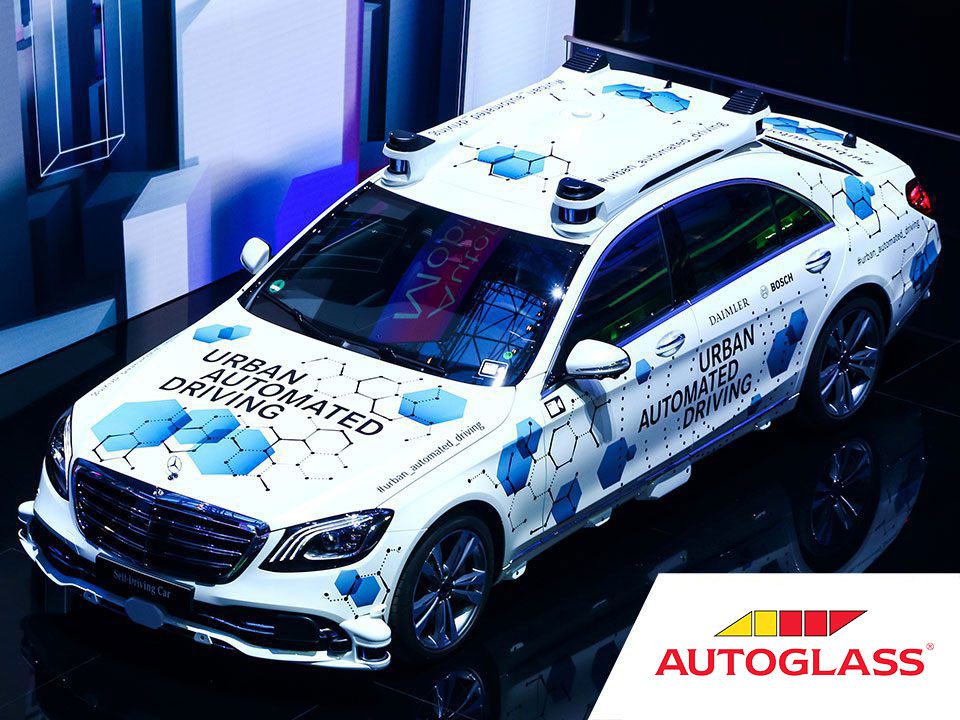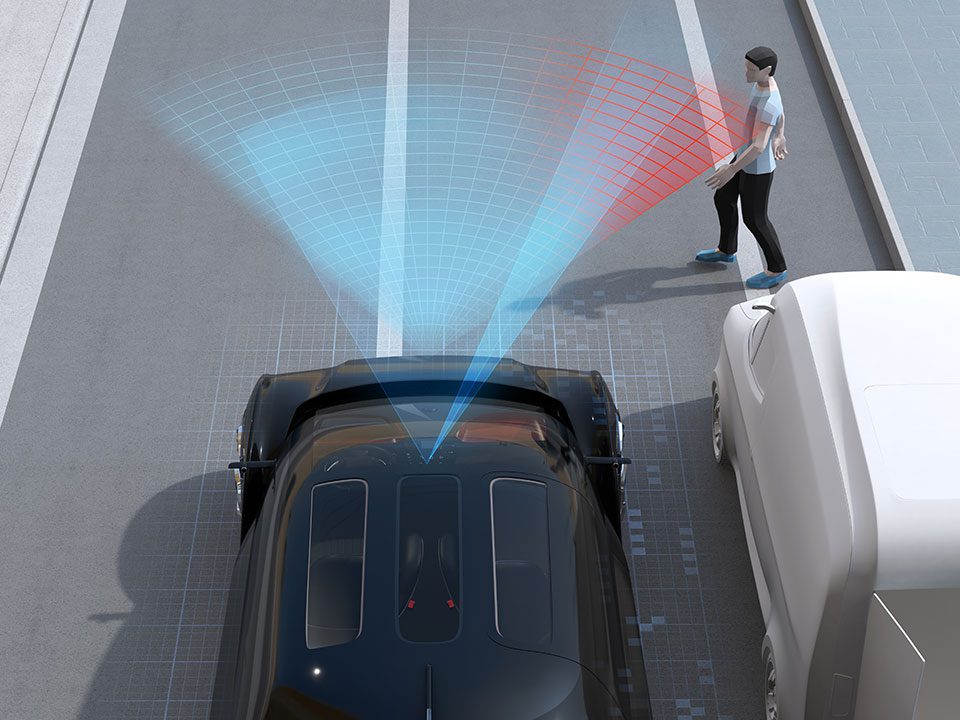
ADAS Future Trends
ADAS or Advanced Driver Assistance Systems is a collective term for the various technological enhancements and conveniences we’ve come to expect in modern vehicles. The last decade or so has seen the driving experience change for countless motorists as each year brings with it an array of intriguing new technologies designed with safety and comfort in mind. The fast-paced and evolving world of ADAS technologies can feel a little bit bewildering if you’re in the market for a new car – how many of these futuristic features do you need? Well, you might be surprised just how quickly a feature you once thought the stuff of science fiction becomes part of your day to day driving. In fact, autonomous driving – or driverless cars – may start popping up on streets and motorways much sooner than you think. Current figures from the world’s leading car manufacturers project that ADAS features relating to autonomous driving will become near ubiquitous in the next few years. By 2025 something close to 85% of vehicles produced globally will feature some degree of driving automation.
Dynamic vs Static ADAS – what’s the difference? >>
To better get a sense of how Autonomous ADAS will shape the future of your driving, it can be helpful to get a firmer understanding of the different degrees of autonomy that is present in different vehicles. Vehicle Autonomy is measured in levels.
Vehicle Autonomy Levels
Level 0:
The vast majority of vehicles on the road today are classed at Level 0: manually controlled. The driver handles the entirety of the “dynamic driving task” although there may be systems in place to help out. For example, think of an emergency braking system – since your emergency brake technically doesn’t “drive” the vehicle, it would not qualify as automation.
Level 1:
The “Basic.” level includes features that many modern vehicles come equipped with or might offer as an optional extra. Front and rear collision warning indicators, blind spot detectors, lane departure warnings and so on.
Level 2:
The “Driver assistance” level is where we enter into the realm of ADAS as discussed above. The vehicle can control both steering and accelerating/decelerating. Here the automation falls short of self-driving as a human sits in the driver’s seat and can take control of the car at any time. Features you would find at Level 2 includes automatic emergency braking, adaptive cruise control, lane keep assist, distance control, automatic speed limiting etc.
Level 3:
“Partial automation”. The technological jump between Level 2 and Level 3 is considerable but fairly negligible in terms of driver experience. Vehicles boasting Level 3 automation have “environmental detection” capabilities and can assess the vehicle’s surroundings and make informed decisions on their own, such as accelerating past a slow-moving vehicle. But, crucially, Level 3 vehicles still require human override. That is to say, that the driver piloting a Level 3 vehicle must remain consistently alert and ready to take control should the system be incapable of executing the task it is presented with.
Common ADAS Features Explained >>
Level 4:
“Conditional automation.” The most significant difference between Level 3 and Level 4 automation is that Level 4 vehicles have the capacity to intervene if they detect an issue on the road or an internal system failure. In essence, these vehicles don’t strictly require driver interaction in most instances. That said, the driver still has the option to manually override when they are piloting a level 4 vehicle.
Level 5:
“High automation” vehicles are defined by the fact they offer fully automated driving in certain circumstances without the expressed need for a human driver – also known as chauffeur mode”. Until legislation and infrastructure evolves to reflect the changes in automotive technology, Level 5 vehicles can only engage chauffeur mode within a limited area. Most commonly, urban environments with relatively low speed limits. There are very very few cars on the market today with level 5 capabilities but that is set to change in the coming years.
Level 6
“Full automation.” Fully autonomous, self-driving vehicles negate the need for a human driver entirely. Needless to say, vehicles of this nature have yet to hit the market but are expected to appear by 2030.
Now that we’ve got a richer understanding of the different degrees of autonomy present in the cars we see on the roads, along with the technological advancements we can expect to see in the coming years – let’s take a look at the key ADAS trends that are certain to make headlines in the short term.
AR and HUD – Future Windscreen Trends >>
#1 Integration of 5G and Connectivity
One of the most prevalent ADAS trends to keep a lookout for is the continued integration of 5G technologies into vehicles on the roads.
Equipped with smart, wireless, “Over The Air” transmitters and receivers; many newer models can now wirelessly update their existing sensors and hardware setup with new features as they are rolled out remotely.
Continued 5G integration over the course of the next few years will also see an upgrade in the field of automotive cybersecurity – meaning your onboard technologies will be less susceptible to interference. 5G also allows for technologies like Automated Predictive Maintenance Systems – along with smart devices and cloud-based applications – to foster a new, more data-focussed and sophisticated approach toward servicing your vehicle. With the help of these new ADAS, you won’t need to wait for something to go catastrophically wrong to get your vehicle seen to – the technology should give you ample notice of any looming issues.
#2 Sensor Fusion
Automotive sensors are sure to be a major talking point this year in terms of ADAS improvements. Most modern, ADAS-enabled vehicles are generally stuffed with an extensive set of sensors for monitoring the vehicle’s immediate surroundings and keep you and your passengers safe.
The various different sensors present in your vehicle are traditionally employed for a multitude of different functions. Think, specific sensors for light detection and ranging (LIDAR), another set of sensors for infrared detection and adaptive cruise control (ACC) etc.
Modern ADAS “Sensor Fusion” – of the like being rolled out this year across numerous different car manufacturers – are designed to foster a cleaner network of communication between the various sensors in your vehicle so that it is better equipped to provide the driver with more predictive, proactive information and warnings.
#3 Automotive HMI Design
Though we’ve all likely become somewhat accustomed to touchscreen technology in modern vehicles, 2022 is set to hold even further advancement in this area. In fact, we can expect to see even more seamless interaction with drivers even when the vehicle is parked. The continued integration of advanced human-machine interface (HMI) technologies in vehicular operating systems is set to continue apace over the coming months and years.
Touch-free HMI systems ensure solid mechanisms for driver interaction without requiring drivers to move their hands from the steering wheel while driving, thus reducing the risk of distraction and ultimately accidents.
#4 Embedded Vision
Automotive vision systems are set to spike in popularity over the course of 2022. More than just an indispensable tool for identifying potential hazards on the roads, Embedded Vision technologies are also crucial for collecting critical data and providing on the road warnings regarding the likes of lane drift. These ever-evolving systems gather data needed to support the growing array of advanced features like automatic parallel parking or traffic sign recognition.
In-built vision systems bring a whole new level of safety to your cockpit as they can even serve as driver monitoring systems. Detecting and warning the driver should their attention begin to wander.
The Future of Windscreen Technology >>
As you can see, with ADAS technologies like this – we’re well on our way to the world of tomorrow. Don’t forget, Autoglass® operate the most extensive and sophisticated ADAS calibration network in the country, should you need a system recalibration call us on 01-4090900 to arrange an appointment at a time and location that suits you.
Check back soon for more guides, explainers and tips from the Autoglass® blog. Safe travels.
Book an appointment now
For a quick and easy way to make an appointment book online now.

